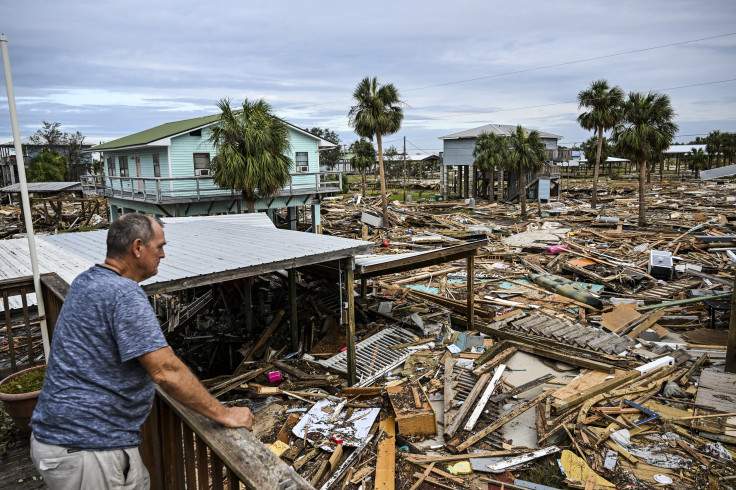
Hurricane Helene, the strongest storm to ever hit Florida's Big Bend region, according to authorities, has left at least 11 people dead in the state as it swept through with devastating winds and catastrophic flooding. The Category 4 storm made landfall Thursday night, triggering a massive rescue and recovery effort as communities work to rebuild.
Florida Gov. Ron DeSantis confirmed the death toll on Saturday, with several fatalities in Pinellas County due to drowning. Rescue operations remain underway in the hardest-hit areas, with nearly 4,000 National Guardsmen deployed across 21 counties to assist.
Massive Destruction in Big Bend Communities
The small coastal communities of Cedar Key and Keaton Beach were particularly devastated. Entire neighborhoods have been leveled, with widespread damage to homes, infrastructure, and historical buildings. The storm surge in Keaton Beach reached up to 20 feet, destroying most homes in the area, Gov. DeSantis reported.
Taylor County Sheriff Wayne Padgett said 90% of Keaton Beach homes "are gone"in the aftermath of the storm. The sheriff's office asked that evacuees refrain from returning early until they are cleared by the Emergency Operations Center. "Returning prematurely poses significant risks due to expected heavy flooding and other hazards. Many roads will be impassable, and there may be downed power lines, fallen trees and other dangerous conditions," the sheriff's office wrote in the post.
Previously, the Taylor County Sheriff's Office, posted a Facebook post asking people who decided not to evacuate to write any important information, such as names and birthdays, on "your arm or leg in a PERMANENT MARKER so that you can be identified and family notified."
The surge damage is Keaton Beach is terrible, some of the worst I’ve ever seen. All of these used to be homes. #helene pic.twitter.com/DIdtyQmNqi
— Max Olson (@MesoMax919) September 28, 2024
According to authorities, Cedar Key also remains unsafe and residents were urged to stay away until further notice. "It's just a multifaceted mess," said Cedar Key Mayor Sue Colson, who described the destruction as widespread and "extremely dangerous."
Power Outages and Flooding
Across Florida, more than 3 million people were left without power as Helene barreled through the state, and floodwaters continue to strand residents and block roads. The flooding was so severe that many areas remain inaccessible, with major highways in North Florida still underwater.
In addition to the fatalities, thousands of people have been displaced, and search and rescue operations are still ongoing. The Federal Emergency Management Agency (FEMA) Administrator Deanne Criswell was on the ground in Florida on Saturday to survey the damage and coordinate federal relief efforts, CNN reported.
Overall Death Toll and Damages
Across five states—Florida, Georgia, South Carolina, North Carolina, and Virginia—Hurricane Helene has claimed at least 60 lives, Reuters reported. The storm's destructive path has leveled homes, knocked out power to millions, and caused widespread flooding. Roughly 2.7 million customers remained without power on Sunday, a U.S. Energy Department official said to Reuters. Officials described the damage in some areas as "biblical devastation."
The National Hurricane Center is now forecasting an "unsurvivable storm surge" of up to 20 feet from Hurricane Helene for the Big Bend of Florida. THIS is what that looks like... pic.twitter.com/acbUG3ceSb
— Nahel Belgherze (@WxNB_) September 25, 2024
More Rain Expected as Storm Moves North
Though Helene has weakened into a post-tropical cyclone, additional rain and dangerous flooding continue to affect the southeastern United States, including parts of Georgia, North Carolina, and Tennessee. Florida remains under threat of more rainfall as the state works to recover from the historic storm.
Gov. DeSantis has compared the destruction from Helene to the damage inflicted by Hurricane Idalia in 2023, calling Helene's impact more severe.
© 2024 Latin Times. All rights reserved. Do not reproduce without permission.










